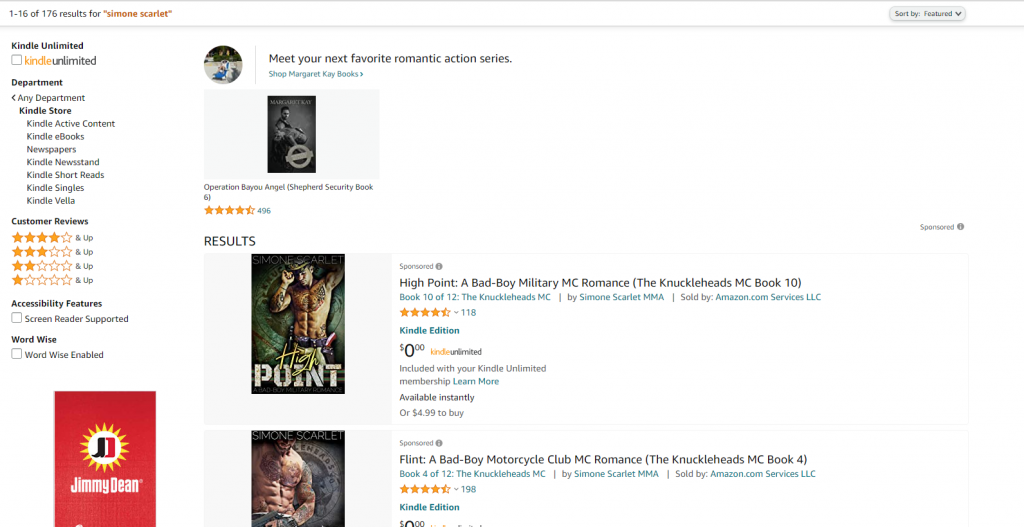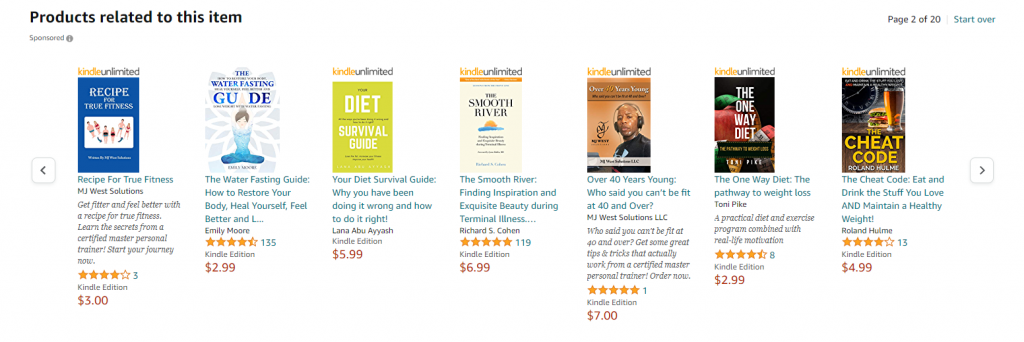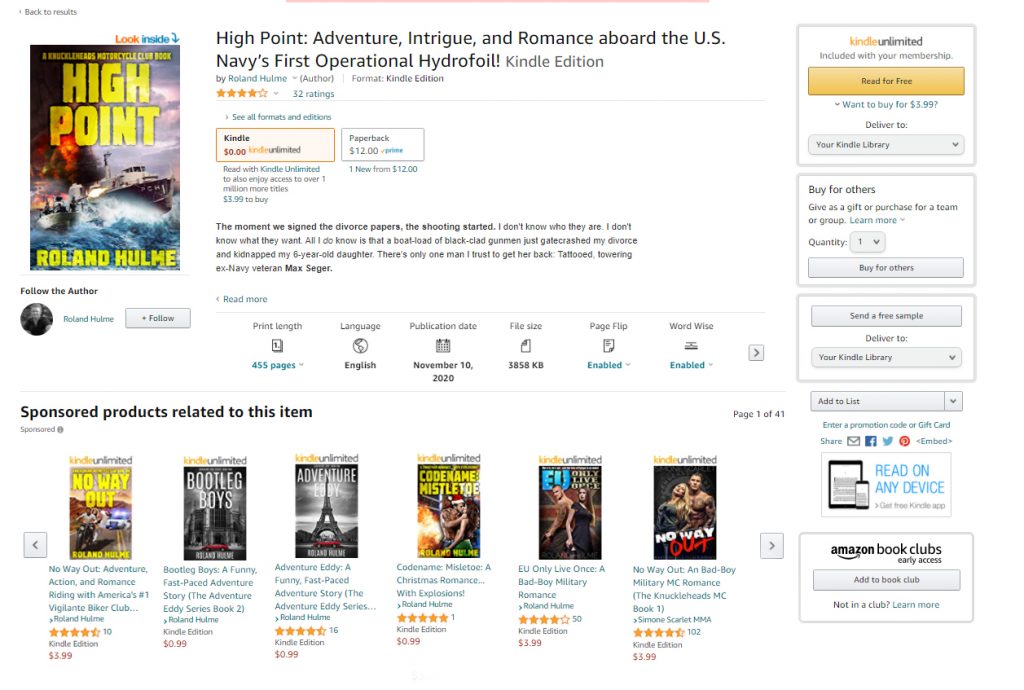Should your Amazon ads use keywords or ASINs?
Advertising on Amazon is the advertising foundation for many successful self-published authors, but it has a notoriously steep learning curve in order to prove successful. One common conundrum for rookie advertisers is whether to use keywords to try and find new readers, or advertise using ASIN numbers. There are different schools of thought about this approach, so Ginger is dedicating this week’s blog post towards helping you decide which option might work best for your books.
What is the difference between keywords and ASINs?
Every product for sale on Amazon has an ASIN, which stands for Amazon Standard Identification Number. It’s a 9-digit code that quickly identifies exactly which product you’re trying to specify out of the millions of things you can buy on Amazon. Self-published ebooks have their own unique ASIN, while paperback books (even the Print on Demand ones made using Amazon’s printing services) have a publishing industry-specific ISBN number. However, if there’s an ebook version of a traditionally-published book, it will have its own ASIN number and all versions of the book – ebook, paperback, and hardback and audiobook if they exist – will be available to purchase on the ASIN-specific product page.
So, this means ASINs can be used to instantly identify one, specific product – and there are benefits to using them in your advertising strategy.
Keywords are something else. These are individual words or strings of words that people enter into the search bar on Amazon’s homepage. For example, “MC Romance” is a keyword that a reader might type if they’re looking for a motorcycle club romance book.
You can use specific book titles as keywords, if you’re looking for a specific book – but Amazon’s search bar doesn’t use them to drive people to a specific product page. Amazon will instead show you a list of search results created by both their organic and advertising algorithms, and there will normally be a couple of different products advertised before you see the top organic result, and there’s a possibility it still might not be the book you’re looking for.
So, this means keywords are used to identify groups and categories of products – and they’re what’s traditionally been used as the primary means of finding new readers using Advertising on Amazon.
I say ‘traditionally’ because that’s not always the case these days. As Amazon’s advertising dashboard has developed and expanded, they’ve made it much easier to target your advertising using ASINs specifically – which can empower authors to have their ads show up not just in general search results, but also on the specific product page of a specific book. Doing this has now become a favored strategy of many self-published authors.
But which is a better approach? And how do they both work? Let me explain below.
Keyword Targeting versus Product Targeting
When you begin creating an advertising campaign using Advertising on Amazon, the Sponsored Products campaign type allows you to choose between Keyword Targeting and Product Targeting.

Keyword Targeting
With Keyword Targeting, you can upload a list of keywords that will help put your book in front of potential readers when they search for things on Amazon. When you search for my author penname “Simone Scarlet”, for example, the first results you will see are my own ads using ‘Simone Scarlet’ as a keyword.

The benefit of using keywords to target your advertising include being able to have your books show up when potential readers are searching for something specific on Amazon. If you write horror stories, for example, you could use the keyword “Stephen King” and hopefully have your book appear in the search results when somebody looks for Stephen King’s latest book.
The major advantage of using keywords is if your book is something somebody might actively search for. I’ve used keywords successfully to promote my non-fiction book about intermittent fasting because people tended to find that book by searching terms like “intermittent fasting book” and “intermittent fasting for men”. Using Google’s keyword generator, I created a list of hundreds of potential search terms and have been able to advertise profitably by using them to promote my book.
However, keywords don’t work so effectively for other types of books – especially fiction. That’s where the power of Product Targeting really comes into play.
Product Targeting
When you choose Product Targeting for your advertising campaign, you’re presented with a different way of entering your targeting data – a box in which you can upload or copy-and-paste ASINs of products you believe are a good match for your potential readers.
With Product Targeting, instead of presenting your ad in Amazon’s search results, it will instead have the chance of showing up on the specific product pages you’ve identified by their ASIN number. For example, by using Product Targeting with my non-fiction book, I was able to have it appear as one of the Products related to this item ribbon on one of the best-selling books about intermittent fasting on Amazon.

Because Amazon have designed their advertising content to resemble organic suggestions, having your book appear on the product pages of similar books is a highly effective way of targeting readers directly. I find it especially effective when I’m advertising my fiction books since Keyword Targeting for my genre of books is highly competitive – not to mention that my readers don’t generally find me by searching for MC Romance books, but by seeing my books displayed on the product pages of authors they currently read.
In fact, marketing expect Robert J. Ryan has even said that 80% of paid-for clicks on Amazon are generated by the ads displayed on product pages, rather than search results – which might seem to suggest that using Product Targeting with ASIN numbers is massively more effective…
…except, it’s not as simple as that
The truth, however, depends on the book you’re trying to advertise, and what your version of success looks like. From a personal perspective, I’ve created successful advertising campaigns using both Keyword Targeting and Product Targeting, and your success and failure largely depends on the approach you take.
For example, one of my most successful advertising campaigns is for my non-fiction book on intermittent fasting, and Keyword Targeting is clearly the most successful option for me there. I’ve generated a list of nearly 1,000 keywords and search terms related to intermittent fasting and balanced that with a very modest bid of just $0.25 per click. Each keyword might only get a handful of impressions per day – but I have so many of them that those impressions soon add up, and because I’ve kept my bid low, I know that I’m always going to average out at a profit.
Conversely, though, I have a massively successful advertising campaign for my fiction books that uses Product Targeting exclusively. It’s a Defensive Advertising campaign, which means I use the ASINs of my own books to ensure they show up in the Products related to this item ribbon, rather than the books of my competitors. I have an aggressive bid of $1.50 on some of these ASINs – but because the reader will be bouncing from my book to another of my books, I’ve found the ratio of clicks-versus-purchases to be enough to keep the campaign in the black.

So, both approaches work – but it takes a bit of trial and error to figure out which one works best for you.
If you want to learn more…
If any of this sounds intriguing to you, be sure to check out our other blogs on the topic. Remember, too, that
Hidden Gems offers 1-on-1 consulting on advertising and marketing your books, which can help you dial in your advertising much quicker than you might do figuring it all out for yourself.
Good luck!












Please sir asinseed is it for ppc campaign or not
Intriguing strategies! Thanks Ginger.